15 Nights / 16 Days
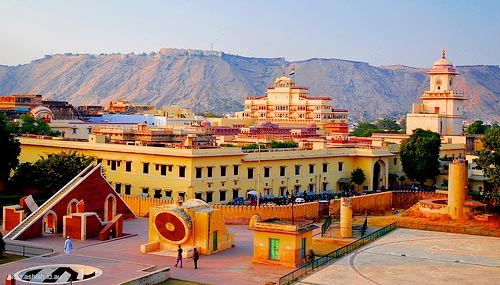
You arrive in the bustling capital of India in the early morning. At the airport you will be greeted by a local staff and escorted to the hotel. After check-in you can relax and acclimatize to the long journey. A few hours of sleep cause it wonders. At lunchtime you do then well rested and invigorated a sightseeing tour of New & Old Delhi. Delhi - The heart of India 's capital, with its thousand-year history, is the city with most attractions of India. It is a fast developing metropolis, which combines past and present in a wonderful way. Today's Delhi consists of two parts, the Old Delhi with its typical oriental city neighborhoods, the vibrant cultural life, narrow streets and numerous bazaars, fascinating department stores, museums, temples and mosques. The New Delhi, was built by British architect 1931 symmetrically as a garden city. Here, among the tombs and mausoleums, memorials noble rulers and kings, adorn wide boulevards, pristine gardens, widely scattered summer colonial houses and shady avenues, New Delhi. First impressions in Old Dehli You can expect the imposing Friday Mosque Jama Masjid - The mosque which looks at the world . It is the largest mosque in India and one of the largest in the world. The Mughal emperor Shah Jahan made them 1650-1656 build from red sandstone and white marble. Continue to Raj Ghat , the final resting place of Mahatma Gandhi . Here on the banks of Yamuna, in the middle of a garden is a memorial stone of black marble. Here Mahatma Gandhi was cremated after his assassination in 1948. On the memorial stone are his alleged last words: Hai Ram (Oh God).
New Delhi and the British Raj
Today you take a full day city tour of New Delhi and so a trip to the early 20th century, in the time of the British Empire. Government district and the India Gate Experience the 1521-1931 built and former British government district of New Delhi. Surrounded by gardens and ornamental ponds boulevard Rajpath , takes you to the Rashtrapati Bhavan , the palace of the former Viceroy of India. It offers an insight into the period of British rule and is one of the largest and most magnificent stately buildings. Not far away is the Parliament House Sansad Bhavan . The trail continues to the India Gate , a triumphal arch which was built to commemorate the fallen soldiers in different wars. Qutub Minar Qutub Minar complex of buildings all date from the early days of Muslim rule in India. The Qutub Minar itself is a sublime Victory Column and the world's tallest brick minaret, as well as the landmark of the city of Delhi.
Tomb of Humayun
Visit the magnificent mausoleum of the Mughal emperor Humayun. This extraordinary building in white and black marble and red sandstone, located in the middle of a huge garden areas. Dead after Humayun, Hamida Banu Begum was his wife's tomb in 1565 set up in nine years of construction. In order to monitor the construction work, they even beat up their camp on there. It is one of the most beautiful and historic buildings in the city and is one of the forerunners of the Taj Mahal.
Today you will take a trip to the outskirts of Delhi. Here you will find the magnificent Akshardham Temple and the largest Hindu temple in the world. It is an architectural marvel that combines Hindu and Indian architecture, culture and spirituality of the last millennia in itself. The young temple complex was inaugurated in 2005 and built in the traditional way, by hand and without the use of steel, all in red sandstone and white marble. The special features of this magnificent temple complex include the artfully crafted columns, the magnificent domes, as well as over 20,000 intricately carved deities. Inside the building is a 3.35 m high gilded statue of Bhagwan Swaminarayan.incredibly There are many attractions that you can admire.
In Sahajanand Darshan - In the Hall of the values - the values of humanity such as, etc. presents a life of happiness, success and peace, non-violence, faith from the life of Bhagwan Swaminarayan in a fascinating way.Life-size, artfully crafted characters come to life through technology, lighting and sound effects, dialogues and music and take the viewer into the India of the 18th century. In Neelkanth Darshan - movie theater with a big screen - is the story of an exciting and inspiring pilgrimage of eleven year old child-yogi Neelkanth Varni, told from the 18th century. This unique film was shot in the icy peaks of the Himalayas and on the coast of Kerala in the south. Get on an exciting journey through the majestic Himalayas, kidnap to India's holy places, festivals and spiritual traditions. Among the highlights - Sanskruti Vihar - a spectacular ten-minute boat ride through the Indian culture 10,000 years old, which grew on the banks of the Sarasvati is. Here the glorious ancient India comes to life. You arrive at the oldest Vedic village in the world over, to traditional bazaars, the world's first university, and many other illustrations. Yagnapurush Kund - Musical Fountain - here you can spend an evening a fascinating and colorful water-light show at the step wells.
Let's take trapped by this unique atmosphere and enjoy the day to the fullest. The Swaminarayan Akshardham temple will enchant you and leave a fabulous impression on you.
On the next two days you can expect Jaipur, the pink city, with its fascinating sights. Pink City, the capital and largest city of Rajasthan, got its name because of the striking pink-colored houses facades in the downtown area.It is one of the most fascinating cities of Rajasthan, was established in November 1727 by Maharaja Sawai Jai Singh, who ascended the throne at the age of 11 years after the death of his father. Palace of Winds Experience the most famous landmark of Jaipur, the impressive Palace of the Winds - Hawa Mahal . It was built in 1799 and consists of only a facade with 953 refined ventilated bay windows, from where the ladies of the court could watch the activity unseen in the streets. Jantar Mantar , the observatory Jantar Mantar built by Maharaja Jai Singh 1724-1734. He was not only a great ruler, but also a keen astronomer. The system is still fully functional and is considered the largest and probably the most elaborate observatory of its kind in India. Here you can admire the largest sundial with a height of 27 m. City Palace The trail continues to the City Palace from 1890. Even today is a part of the palace as a residence of the Maharajas. Here is the Sawai Man Singh Museum with historical collections of carpets, garments and weapons. A tour of the city palace with its beautiful gardens is an exciting experience, where you can imagine the life of that time pictorially.
Just outside Jaipur is located on a hill, the imposing Amber Fort, the original seat of the Maharajas. The exterior facade of the palace is distinguished by its red sandstone and white marble. A labyrinth of corridors, stairways and escape routes runs through the mighty fort Let yourself be enchanted by the magnificent Hall of Mirrors of the former Royal Palace, which is decorated with a variety of small mirrors. Climb up the path to the fort on the back of an elephant or a jeep and enjoy the spectacular view on the Aravalli mountain range. Shopping in Jaipur Enjoy close by the impressive visit to the Amber Fort, an extensive shopping tour. . A shopper's paradise, rich in silk and beguiling gem shops.
Today you are on their way to Agra, en route visit the exceedingly fascinating imperial city of Fatehpur Sikri. The City of Victory is a deserted desert town was built in the 16th century by the Mughal prince Akbar. Due to shortage of water the city was abandoned after only 15 years. Still, the red sandstone buildings of the former ruling family are so well preserved that it seems as Akbar the Palace only yesterday to leave.
Agra was more than one and a half centuries the capital of the Mughal Empire. Its charming architecture reflect the splendor and prosperity of a country, which extended over a wide part of India between the 16th and 18th centuries. His heyday Agra by Mughal Emperor Akbar. He built eight years with 4,000 workers, the magnificent castle fortress: the Agra Fort To date, the city has lost none of its medieval atmosphere. Taj Mahal Here you will find the most famous landmark of India and the most beautiful declaration of love ever: the Taj Mahal. Surrounded by beautiful gardens stands the stunning monument of love. Each of the first enters the garden and suddenly standing in front of the Taj Mahal, will not forget the moment in which the well-known image is reality. Shah Jahan made this masterpiece built for his favorite wife, Mumtaz Mahal, who died giving birth to their 14th child. A token of love, as it has never seen the world. A dream of white marble that shines in different colors depending on time of day and lighting conditions. Agra Fort Then you will visit the imposing Agra Fort with its 2 km long fortification walls. The castle on the banks of river Yamuna, with its richly decorated private rooms, its splendid fully-equipped audience halls and mosques is one of the most beautiful forts in India.
From here you have a wonderful view of the Taj Mahal.
The serene and magical Orchha lies on the route to Khajuraho. You start in the morning from Agra with the Shatabadi Express to Jhansi. From there you drive 16 km through beautiful nature with sparkling lakes, bright green forests and lovely babbling brooks. The powerful 1531 on the banks of river Betwa founded Rajput capital developed during the reign of the Bundela dynasty in the 16th-17th Century into the most important town in the area. The founder of the city, leaving fantastic buildings of different architectural styles, which fuses Hindu, indoislamische and European influences. You will be delighted with this pristine beauty with its magnificent palaces and temples. The Fort of Orchha The impressive fort from the 15th century situated on a hill surrounded by dense vegetation. A true architectural masterpiece of medieval architecture is the impressively constructed bridge from the 17th century. It reflects the architectural achievements of the erstwhile rulers Orchha in the Middle Ages. temples and palaces in the center of the city stands on a platform of the Chaturbhuj Temple The path leads over several spiral staircases. At the top you are rewarded with a magnificent view of Orchha, its surroundings and temples. Including the Ram Raja of the erstwhile palace of Maharani. On the other bank of the Betwa is the Raj Mahal , the former residence of Madhukar, it is decorated with beautiful murals.
Today your journey takes you to the highlights of the Indian subcontinent, to Khajuraho. In the period 950-1050 AD, this small town has experienced an astounding golden age of architecture. This temple is one of the most magnificent examples of medieval temple art in India. The temple is mainly famous for its many erotic stone sculptures. These masterpieces of stone carving demonstrate all the perspectives of human existence. The sculptures and reliefs showing gods, nymphs, demons, fear, doubt, jealousy, animals, warriors, and mostly women and lovers in perfect passion. When the British saw the temple for the first time, they were shocked by the erotic representations. You misunderstood the actual message of the figures. For the former Hindus the universe was held together by the female and the male and the sexual union of man and woman was for them an expression of that perfect connection. Upon arrival in Khajuraho you, the afternoon is at leisure. Take a hike through the interesting environment or relax at the hotel.
The Hindu temple of the western group are embedded in the midst of a park. Particularly worth seeing is the big majestic, Vishnu consecrated Lakshmanan Temple , with its lush embellishments. He is the first built in the Khajuraho temple style and combines all the temples of the late Hindu period in itself. To the west of the park are three great temples. The magnificent Kandariya Mahadeva Temple marks the culmination of the Chandella architecture. His two archways at the entrance are true masterpieces of stone carving. His characters are composed of slender, large sculptures and an abundance of erotic depictions. The Jagadambi Temple was God Vishnu originally dedicated, later Parvati, the consort of Lord Shiva, and finally the goddess Kali Chitragupta Temple This temple is dedicated to the only the sun god Surya and a rarity in northern India. Dating from the 11th century shrine houses inside a 5 m high statue of Lord Surya. visit Eastern group of temples of KhajurahoThe Jain shrines are smaller than the western group of temples and are located near the Khajuraho village. TheParsvanath temple stands through its impressive architecture and beautiful sculptures. Especially remarkable two female figures are shown in the finest perfection as a mandrel is removed from the foot and the other lipstick.The Shantinatha temple houses a huge, 4.5-meter-high statue of Adinath. It is somewhat smaller than the adjacent Adinatha Temple, which also shows very beautiful sculptures.
After breakfast, make their way to the holy city of Varanasi. Upon arrival and check-in at the hotel, you will visit in the afternoon the small town of Sarnath, located just 10 km east of Varanasi. It is one of the four holiest places of Buddhism and one of the oldest sites.
Emperor Ashoka, a successful commander, has finished his military campaigns after a particularly bloody and costly battle. He turned to Buddhism and Non-Violence and built in Sarnath an important religious center of monasteries and stupas, which were destroyed by a Muslim invasion in the 7th century AD. Until now seems from the preserved remains of this holy place a special likely stimulus. Because unaffected by the destroyed buildings pilgrimage Buddhist devotees still to the dilapidated remains of monasteries and temples.
Dhamekh Stupa
The best preserved monument of Sarnath, is the most impressive, originating from the Gupta period large Dhamekh Stupa with its partially preserved, fine carved stone reliefs. In the park of Sarnath Buddha preached in 528 BC after his enlightenment, the first four noble truths , which the Eightfold Path to Nirvana included.Emperor Ashoka was the exact spot, is said to have held his first sermon at the Buddha, building the impressive stupa.
Ashoka Pillar Just to the west are the remains of the famous Ashoka pillar from the 3rd century BC Originally, the column 15 m high and was topped by four lion heads, which are the main attraction of the museum of Sarnath today. All that remains of the five parts of your base. Are Archaeological Museum Built from sandstone museum houses some treasures from the past. Among the most impressive exhibits include originating from the 3rd century well preserved Löwenkapitell the Ashoka Pillar, which now adorns the Indian national emblem as well as an old stone shield carved with the ornate Buddhist symbols.
Varanasi, once known as Benares, is the holiest city in India and one of the oldest inhabited cities in the world.Located on the banks of the Ganges put it on for centuries pilgrims who seek salvation and consolation. TheEternal City , such as Varanasi is also called, whose temple so often plundered by conquerors and their walls so many times destroyed by the raging waters of the Ganges, one can only imagine how it once looked like here. But the sacred rites of the people on the famous Ghats, on the banks of the holy Ganga and the many pilgrims, the past can come back to life and the old Benares awakened again. The old town - stroll through the narrow streets of the ancient city of Varanasi is a maze of countless streets and alleys where just enough space to work.A great experience is a walk through the old town, for here, the life takes place in a harmonious way of humans and animals. The Ghats The main attraction of Varanasi are about 80 ghats lining the Ganges shore. Here you can get an insight into the vitality and diversity of Hindu rituals. From morning to night, thousands of pilgrims on the ghats to pray, or to take a bath in the Ganges. They hope this will wash away all sins.
Varanasi at sunrise
With a rowboat, you will experience an unforgettable experience and a great spectacle in the early morning at sunrise, when the first rays of the sun the Ganges leaves shine in different colors. See how on the water flowers and garlands, which were presented to the goddess Ganga and drive flickering oil lights on small bowls downstream. Enjoy the colorful life along the ghats, listen to the sound of bells from the nearby temples and let yourself be enchanted by this stunning atmosphere.
Aarti ceremony on the evening Experience an Aarti ceremony on the famous Dasaswamedh Ghat . Here nightly spectacular finish prayer ceremonies the day on the Ganges. There are songs sung ignited incense and torches and juggles through the air to the sound of bells. Then small cylinder filled with flowers bowls are lowered into the water. Let yourself be captivated by this magical mood and also put a small bowl into the water and send your own personal wish of Mother Ganga.
Today you leave India and fly to the capital of Nepal, Kathmandu. Also Nepal Land of Gods - - called, not only has the diversity and beauty to offer it enchants with its magical and fairytale atmosphere. The Kingdom of Nepal impressed by its stunning mountain scenery, the jungle areas with its exotic animals and plants, and the friendliness of its inhabitants. Everywhere you will encounter evidence of the Hindu and Buddhist traditions. The valley around Kathmandu fascinated with his former royal sites, the ancient temples, the pyres of the Hindus and its stupas as a witness of the Buddhist faith. companies for the rest of the day for a walk through the old city and bazaars.
The name alone conjures up images of exoticism and adventure, and it corresponds to today these ideas. The extraordinary capital in the Himalayas, which combines culture and tradition of Nepalese in itself will captivate you in no time. The Kathmandu valley is a UNESCO World Heritage Site and is home to extremely lovable and religious people as well as the highest Himalayan peaks. The pagoda-like roofs of palaces, temples and houses, the wealth of excellent crafted carvings and the unique atmosphere of the attraction of the Kathmandu valley from.Hanuman Dhoka Durbar Square First you visit one of the main attraction of the city, the Durbar Square. It is the place in front of the old royal palace of Kathmandu, Hanuman Dhoka which with its numerous temples and statues of Buddhist and Hindu culture. The Hanuman Dhoka Durbar was built of red brick and is at the heart of these sanctuaries. The palace was in the 16th century residence of the Malla kings and now serves mainly as a museum, as well as for coronations and ceremonies. Taleju Temple in Durbar Square is the temple of the goddess Taleju. He is dedicated to the goddess Kali, once the patron goddess of the Malla kings. At the main entrance, a sculpture of Hanuman is the Hindu monkey god, he is the patron deity of the former Malla kings of Kathmandu. , the virgin goddess Kumari in Nepal is considered the Kumari, a little girl, as the reincarnation of the goddess Parvati. Your task is to protect Kathmandu and its citizens. Seven times a year, they carried on a palanquin through the streets. The rest of the time, from about the age of 4 until puberty, when it loses its divinity and is replaced by another girl, she must not leave the house.
Visit the second largest city of Nepal and also the oldest of the three royal cities in the Kathmandu Valley. This city seems so far removed from the present that it acts like a living museum. Their monuments are among the most beautiful and best preserved in Nepal. In the narrow streets and squares with their beautiful pink temples, life is still the same as from centuries ago. 1482 told King Yaksha Malla dynasty from the land among his three sons on. Patan - then Lalitpur - Beautiful city - called capital was, the other two being Bhaktapur (Bhadgaon today) and Kantipur (Kathmandu now).
Nowadays the visit of Bhadgaon, Pashupatinath, Swayambhunath Stupa and Bodhanath on the programBhadgaon - The third and smallest royal city Around 16 km from the capital Kathmandu is Bhadgaon away.Immerse yourself in this indescribable atmosphere that emanates from this place and experience a journey through time that is even more intense than about those of Patan or of old Kathmandu. Bhadgaon was built on a hillside and is surrounded by the fields of the Newar farmers. Pashupatinath Temple Today you will take a trip to Pashupatinath. The place is located on the holy Bagmati River, about five kilometers from Kathmandu. Here there is a huge temple complex, which is one with the largest shrines of the Hindus. Lord Shiva, in his incarnation as Pashupati is here as - - Lord of the animals worshiped. Non-Hindus may not enter the main temple, but worth a try anyway, because around the temple complex of Pashupatinath, there are a large number of other temples and shrines to visit. On the banks of the holy river located on the ghats burning places where the Hindus cremate their dead. Bodhanath - another world The Buddhist sanctuary in Bodhanath you can not miss. The 36-meter-high stupa is one of the most important Buddhist shrines in the Kathmandu valley and is the heart of Tibetan Buddhism in Nepal. Impressive is the white tower crowned by a golden stupa is surrounded by a group of Tibetan monasteries, which are among the largest in Nepal. Access the stupa is possible only through a narrow passage.Upon entering you expect the penetrating eyes of the Buddha which rises directly in front of you.Swayambhunath - The Golden Tower One of the most recognizable landmarks of Nepal is the golden tower of Swayambhunath. He is surrounded by many small temples and statues, as well as some Buddhist monasteries. A pilgrim trail leads up through a wooded park about 365 tree statues steps to the temple platform. The all-seeing eyes of Buddha watch from the Swayambhunath Stupa in the Kathmandu Valley.
After breakfast you will back on the road to Kathmandu. Here you have the rest of the day at leisure. After this fascinating journey it goes back into the home. At the appropriate time, transfer to the airport.
| No of pax | Age Limit | Price per pax (Rs) |
|---|---|---|
| Adult | Above 12 years | $ 1550 / Adult |
PML Travel Group Through Its Strategic Business Units and Partners Tour Operators World-wide, Caters to the Travel Needs of Varied Business Segments Viz, Individual Travel, Group Travel, Mice, Luxury Travel, Rail Journeys, Soft Adventure, Charter Operations, Cruise Handling , Museum Tours, Educational Trips, and Wellness Holidays. Our Strong Alliances in the South Asia Region Extend Into the Tourism Friendly Countries of Nepal and Bhutan. Read More...
1,33,300 PP
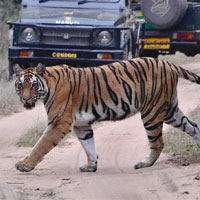 8D/7N
8D/7N
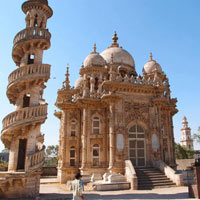 11D/10N
11D/10N
Vibrant Gujarat Fort and Palaces with Sa..
New Delhi - Ahmedabad - Bhavnagar - Sasan - Junagadh - Rajkot
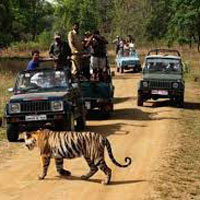 7D/6N
7D/6N
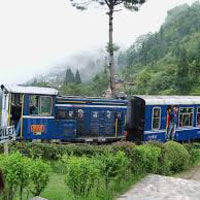 15D/14N
15D/14N
Bhubaneswar - Konark - Puri - Kolkata - Kalimpong - Pelling - Gangtok - Darjeeling ..
 20D/19N
20D/19N
Chennai - Mahabalipuram - Trichy - Madurai - Rameshwaram - Kanyakumari - Kovalam - ..
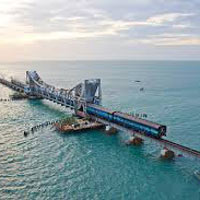 17D/16N
17D/16N
Chennai - Mahabalipuram - Trichy - Madurai - Rameshwaram - Kanyakumari - Kovalam - ..
 15D/14N
15D/14N
Mumbai - Bangalore - Mysore - Ooty - Madurai - Mahabalipuram - Chennai - Kochi - Ta..
 15D/14N
15D/14N
Kolkata - New Delhi - Gangtok - Lachung - Yuksom - Pelling - Bagdogra - Yumthang - ..
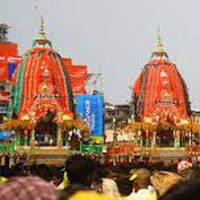 8D/7N
8D/7N
 16D/15N
16D/15N
New Delhi - Bikaner - Jaisalmer - Jodhpur - Ranakpur - Jaipur - Agra - Mandawa - Ti..
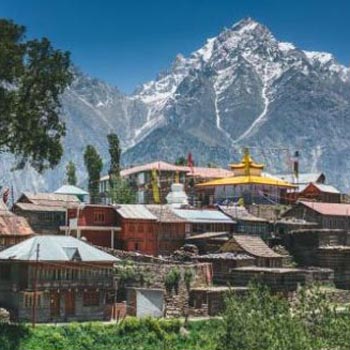 16D/15N
16D/15N
Shimla,Kinnaur,Manali,Amritsar Romantic ..
Shimla - Kinnaur - Manali - Amritsar
 16D/15N
16D/15N
Bikaner - Jodhpur - Jaisalmer - Mount Abu - Chittorgarh - Pushkar - Ajmer - Jaipur ..
 16D/15N
16D/15N
Golden Triangle with Yoga Meditation Tour
New Delhi - Agra - Jaipur - Rishikesh - Haridwar
 16D/15N
16D/15N
16 Days North & South India Tour
Agra - Jaipur - Bangalore - Periyar - Mumbai - Mahabaleshwar
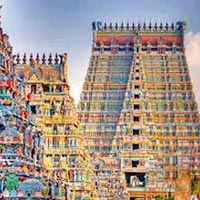 16D/15N
16D/15N
Mumbai - Goa City - Belgaum - Bagalkot - Badami - Hassan - Mysore - Bangalore - Hos..
 16D/15N
16D/15N
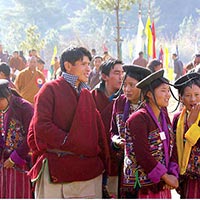 16D/15N
16D/15N
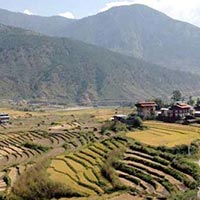 16D/15N
16D/15N
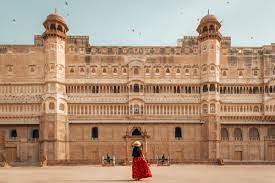 13D/12N
13D/12N
Rajasthan Tour Package 12 Night - 13 Days
Ajmer - Bikaner - Jaipur - Jaisalmer - Jodhpur - Mount Abu - Pushkar - Udaipur
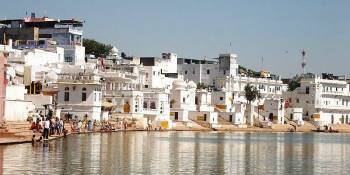 13D/12N
13D/12N
12 Nights Rajasthan Package From Jaipur
Ajmer - Bikaner - Jaipur - Jaisalmer - Jodhpur - Mount Abu - Pushkar - Udaipur
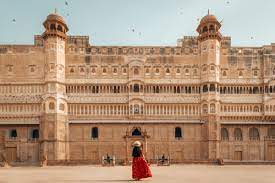 13D/12N
13D/12N
Rajasthan Tour Package 12 Night - 13 Days
Ajmer - Bikaner - Jaipur - Jaisalmer - Jodhpur - Mount Abu - Pushkar - Udaipur
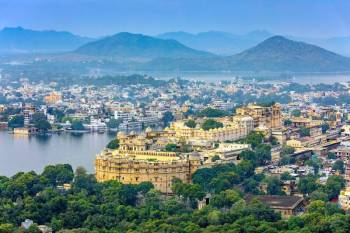 12D/11N
12D/11N
11 Nights 12 Days - Delhi Agra Rajasthan
New Delhi - Mathura - Agra - Jaipur - Ajmer - Pushkar - Udaipur - Mount Abu - Ranak..
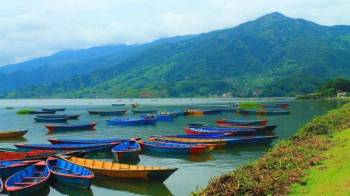 12D/11N
12D/11N
11 Nights - 12 Days Nepal Tour From Gora..
Prayagraj - Gorakhpur - Varanasi - Ayodhya - Kathmandu - Pokhara - Chitwan - janakpur
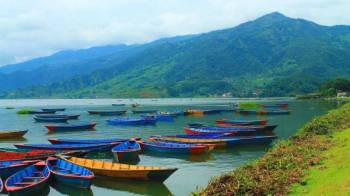 12D/11N
12D/11N
11 Nights - 12 Days Nepal Tour From Gora..
Prayagraj - Gorakhpur - Varanasi - Ayodhya - Kathmandu - Pokhara - Chitwan - janakpur
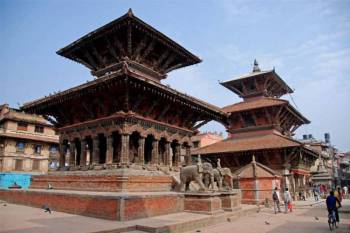 12D/11N
12D/11N
11 Nights - 12 Days Nepal Tour Package - 2
Prayagraj - Gorakhpur - Varanasi - Ayodhya - Kathmandu - Pokhara - Chitwan - janakpur
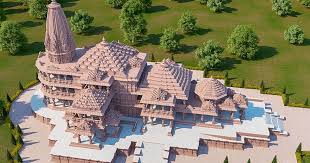 12D/11N
12D/11N
Prayagraj - Varanasi - Bodhgaya - Ayodhya - Pokhara - Chitwan - Parsa
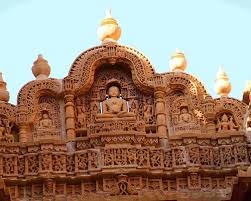 10D/9N
10D/9N
9 Night - 10 Days Rajasthan Tour Package
Ajmer - Jaipur - Jaisalmer - Jodhpur - Mount Abu - Udaipur